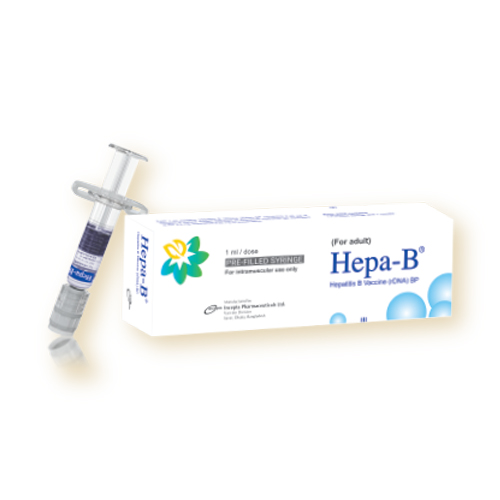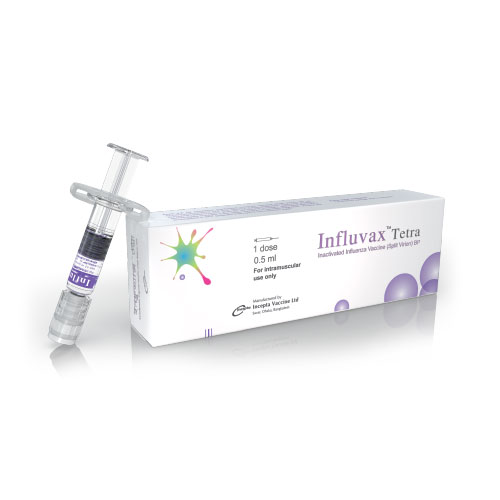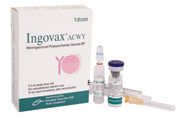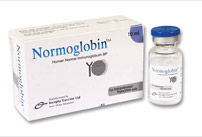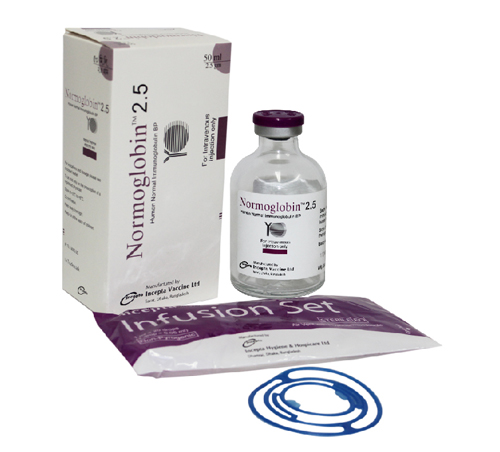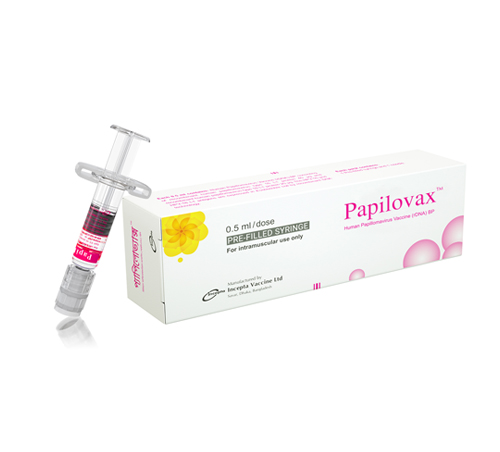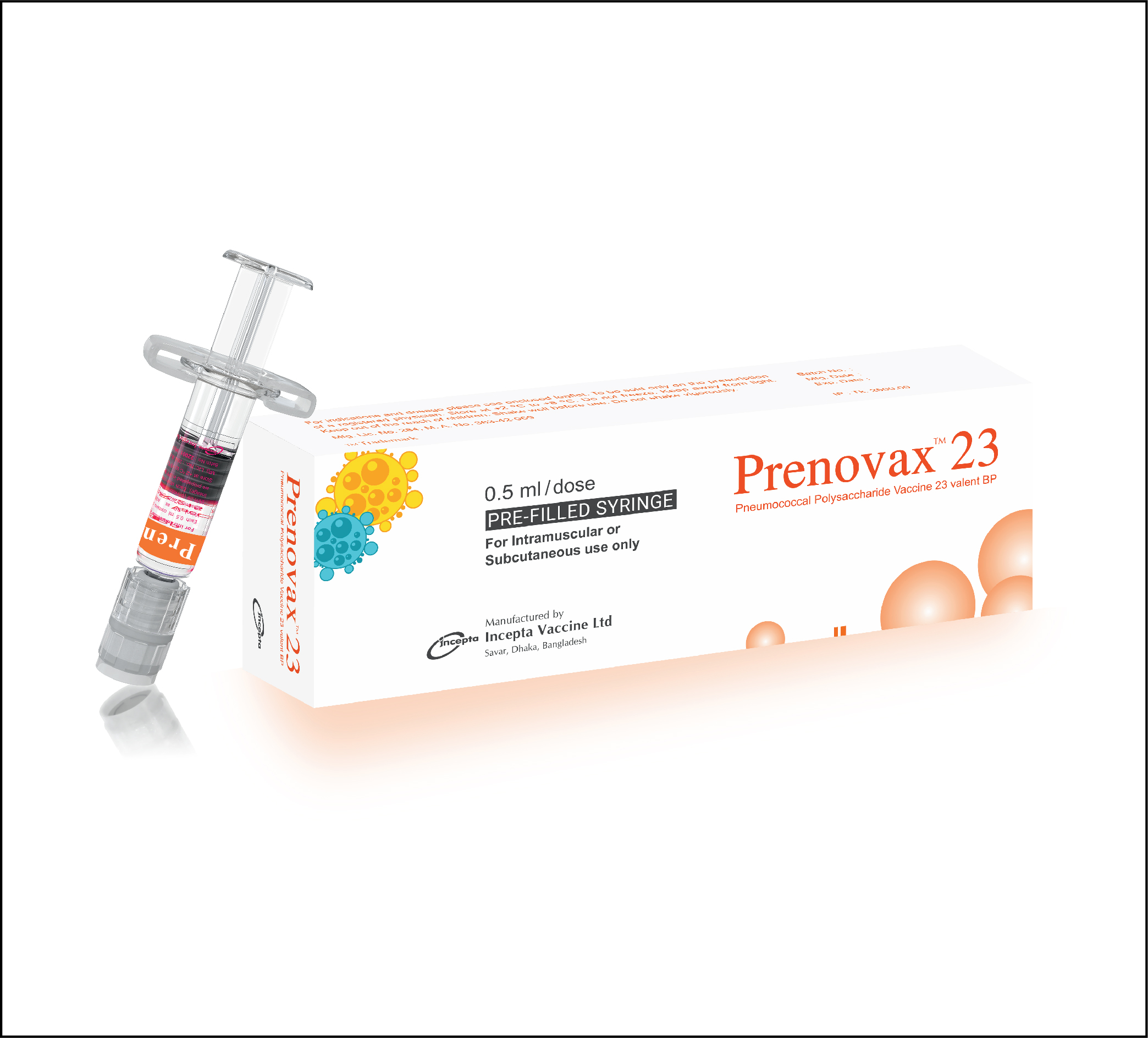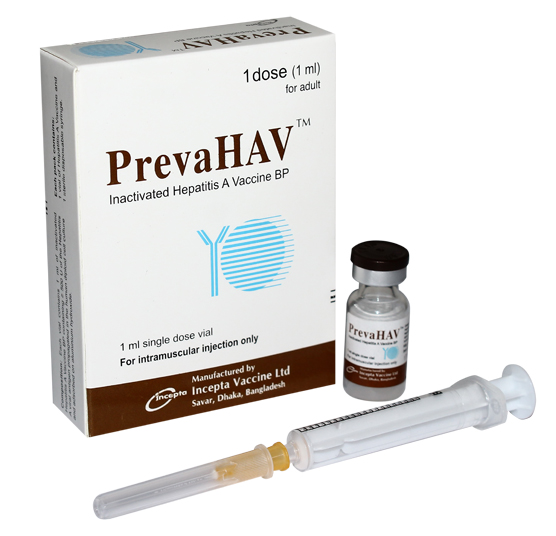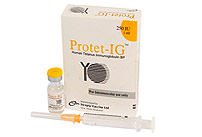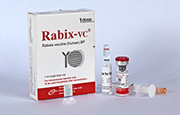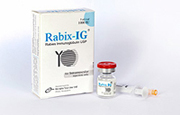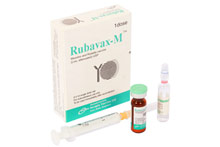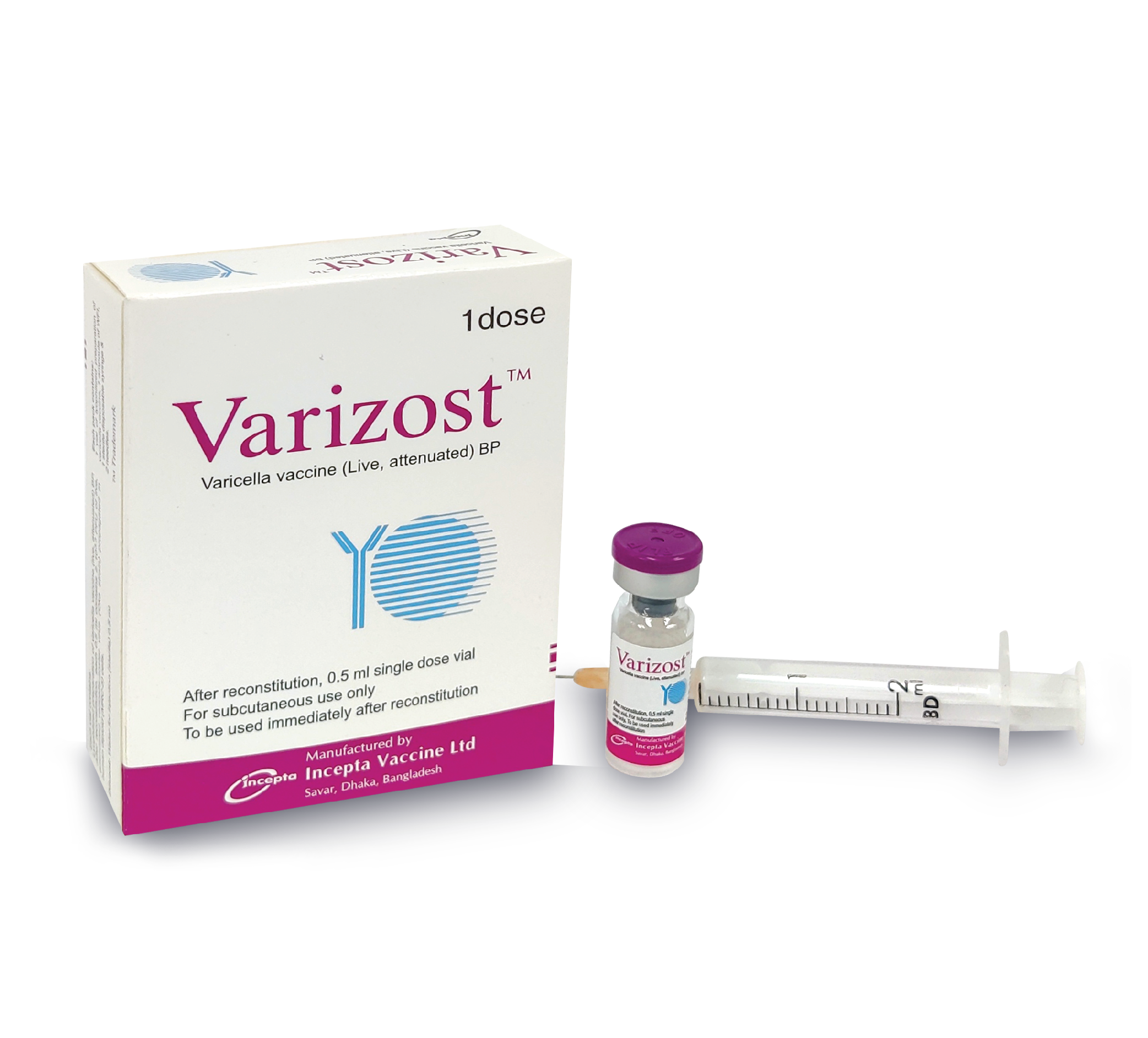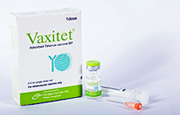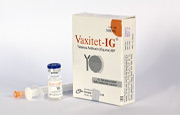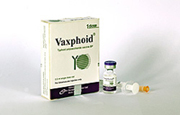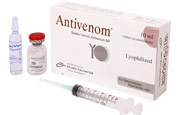Presentation:
Antivenom : Each vial contains lyophilized preparation of Snake Venom Antiserum BP. After reconstitution each ml Snake Venom Antiserum neutralizes not less than Cobra venom (Naja naja) 0.60 mg, Common Krait venom (Bungarus caeruleus) 0.45 mg, Russell's Viper venom (Vipera russelli) 0.60 mg, Saw-scaled Viper venom (Echis carinatus) 0.45 mg.
Description:
Snake Venom Antiserum lyophilized is a refined and concentrated preparation of serum globulins for intravenous administration, containing equine immunoglobulin fragments F(ab')2, obtained from the plasma of healthy equines, hyperimmunized against venoms of above species of snakes. In addition, it also contains the anti-microbial agent: cresol.
Indications:
Antivenom is indicated for bites caused by Cobra, Common Krait, Russell's Viper and Saw-Scaled Viper, where the patient presents with one or more of fallowing visible clinical signs and symptoms of envenomation –
1. Local envenomation-
a) Presence of bite marks with or without oozing of blood, blistering and change in color of skin.
b) Rapidly progressive or massive swelling involving more than half of the bitten limb within few hours of bite (without tourniquet)
c) Development of enlarged tender lymph nodes draining the bitten part within couple of hours after bite
2. Systemic envenomation-
a) Neurotoxic syndrome- signs of neuro-paralysis like blurring of vision, double vision, and difficulty in swallowing, sleepy feeling, drooping of head, Slurring of speech and the voice may become indistinct with shallow breathing, ptosis, ataxia, respiratory paralysis and generalized flaccid paralysis.
b) Hemotoxic syndrome- spontaneous systemic bleeding, nausea, vomiting, abdominal pain and abdominal tenderness suggestive of gastro-intestinal or retro-peritoneal bleed and/or renal damage, coagulopathy detected by 20 min WBCT with or without external bleeding and shock.
(It has been reported that Snake Venom Antiserum also provides para-specific neutralization of venoms of related snake species, however, the extant of protection is uncertain).
Direction for Reconstitution:
To reconstitute the Snake Venom Antiserum, transfer content of supplied diluents into the vial containing lyophilized preparation. Mix the contents gently by swirling action and avoid vigorous shaking. Serum should be used as soon as possible after reconstitute.
Dosage and Administration:
As of now Antivenom is the only specific antidote for snake envenomation and prompt administration of adequate dose of Antiserum is of paramount importance for neutralization of unbound circulating snake venom components for early response to treatment. Any delay in administration may result in increased dose requirement and decreased effectiveness. As the clinical signs can vary due to many factors such as type of snake, time of reporting after bite, size of snake, amount of venom injected during bite, seasonal & regional variation in venom composition etc., no accurate dosage can be recommended. However, considering the average quantity of venom injected by snake at the time of bite and degree of envenomation, it is recommended to administer initial dose of 5-10 vials of Antivenom by slow intravenous infusion either undiluted at a speed of not more than 2 ml per minute or after dilution with Normal /glucose saline at a rate of 5-10 ml/kg body weight over one hour. Children should receive the same dose as adults. Constant monitoring of the vital signs at frequent intervals during initial 1 hour is recommended. Requirement of further dosing depends on extent of reversal of coagulopathy confirmed after 6 hours of Antiserum administration by WBCT in haemotoxic bite or if symptoms persist or worsen or in respiratory failure in neurotoxic bite after 1 hour of Antiserum administration. If the blood is still in coagulable or no signs of reversal of paralysis are seen, a further dose of 5 to 10 vials of Antiserum should be administered by slow IV route only. Administration by IM or locally around the bite wound is not recommended. In the majority of cases of both neurotoxic and haemotoxic bites, total dose of 15-20 vials is adequate unless a proven recurrence of envenomation is established. In such a scenario, further doses can be given as per clinical condition of the patient. Hypersensitivity skin test has no predictability value and hence should not be used.
Side Effects:
Antivenom being derived from equines is heterologous to humans can give either early or late reaction.
Adrenaline should be always kept handy, before starting the dose of Antivenom.
Reduction in adverse reactions has been reported by use of adequate dilution of Antivenom with saline and controlling rate of infusion.
Precautions:
Proper precautions are necessary while dealing with persons with a known hypersensitivity to constituents of product. Few doctors prefer to premedicate patients with Inj. Adrenaline 0.25 ml s/c to prevent possibility of adverse reactions. In haemotoxic bites, IM injections should be avoided till correction of coagulopathy to avoid formation of haematoma and oozing of blood.
In patients having tourniquet, it should be released slowly only after start of Antivenom administration.
Contraindications:
There are no known contraindications for the administration of Antivenom.
Use in Pregnancy and Lactation:
Considering the risk associated with snake bite envenomation, pregnancy is not a contraindication for the administration of Snake Venom Antiserum subsequent to bite,
Storage:
Lyophilized Antivenom is stable at room temperature and does not require special storage facilities. Ideally, it should be stored in a cool & dark place and do not expose to excessive heat.
Commercial Pack:
Antivenom : Each box contains 1 vial of Snake Venom Antiserum BP, 10 ml WFI ampoule and one sterile disposable syringe.



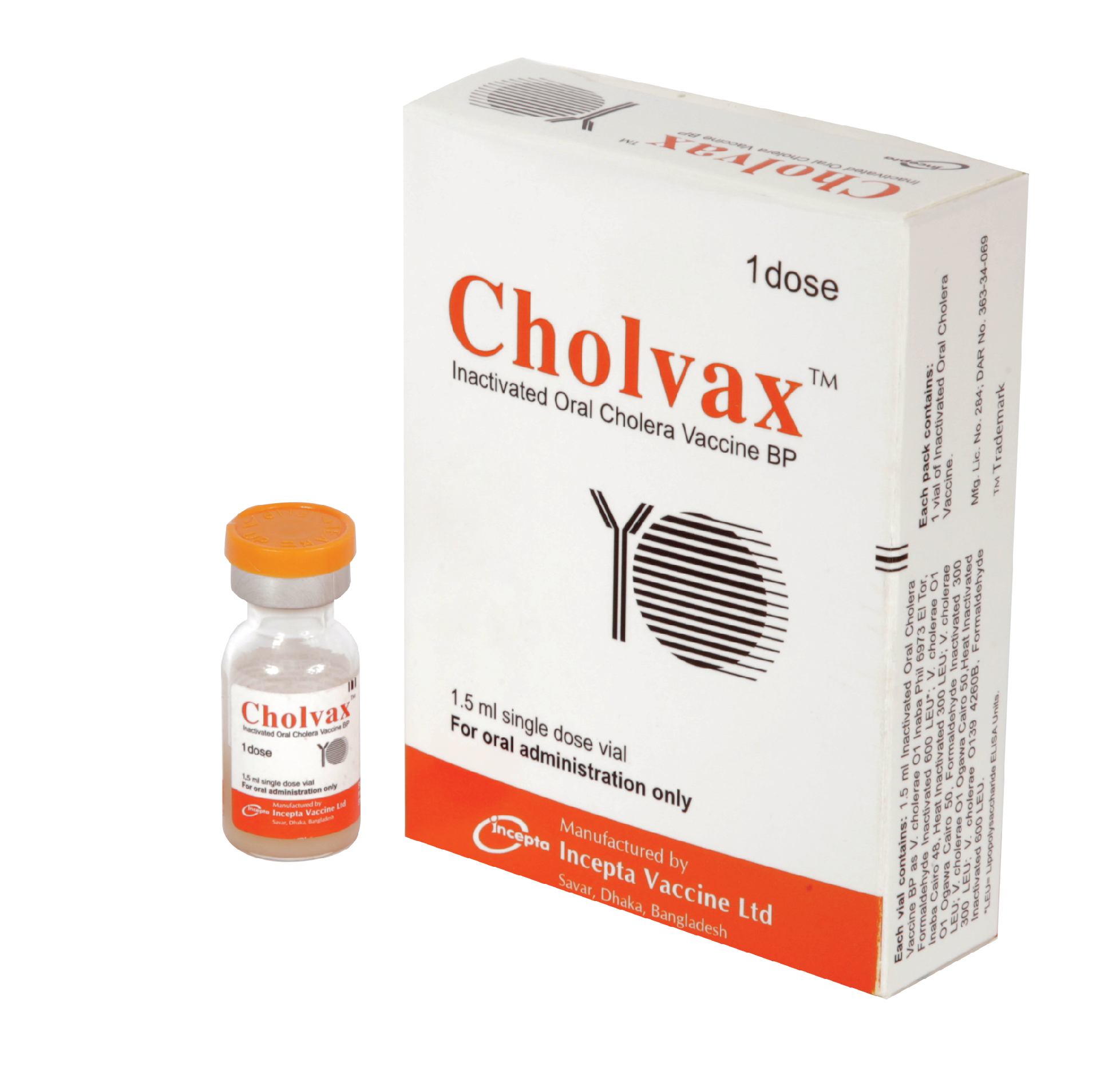
.png)
